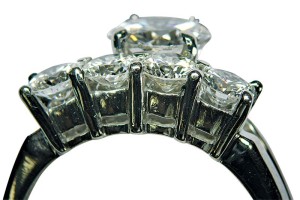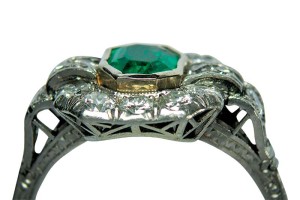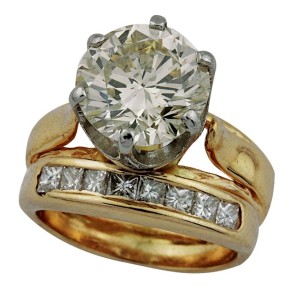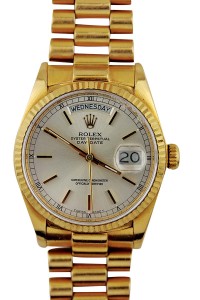The art of self-defence: Disclosures, disclaimers, and delusions
by charlene_voisin | October 1, 2014 9:00 am
By Mark T. Cartwright
 [1]
[1]For more than two decades, I was a practitioner of the Japanese martial art of Aikido. The style I practiced was focused primarily on the purely defensive and harmonious blending of the ‘attack’ and ‘response’ energies. Most of the appraisers I know also practice some form of self-defence, at least in their appraisals.
Whenever I read other appraisers’ reports, it is fascinating to understand what they perceive as a potential threat and how they choose to respond to it. I’ve found those responses tend to fall into three general categories: disclosures, disclaimers, and some form of delusion. My own reports strongly favour the first category. (Perhaps I should remind readers I can’t be held responsible for my opinions because it’s very possible I’m deluding myself!)
First, let’s make clear the differences between the first two categories: disclosures and disclaimers. Among synonyms and definitions of the word ‘disclosure,’ you’ll find ‘declarations,’ ‘revelations,’ and ‘facts that are made known.’ As I usually explain to my clients, disclosures are the parts of the report telling everyone what I did or didn’t do, why I did or didn’t do it, how I did it, the limitations I faced, and what the terminology I used in the report means. ‘Disclaimer,’ on the other hand, is any statement that attempts to limit or deny something, usually responsibility. In my reports, the only two disclaimers of responsibility involve the intentional alteration of the report by a third party and/or the misuse of the appraisal for a purpose for which it was not intended, such as the use of an insurance replacement valuation for resale.
A waste of paper?
 [2]
[2]I recall overhearing a discussion between two appraisal industry ‘old timers’ many years ago (at the time they were probably younger than I am now) in which they espoused utter contempt for the ’10-page, single-item appraisal.’ They were both of the opinion such documents were filled with pages of ‘useless verbiage’ intended to make the appraiser seem knowledgeable and important, while providing nothing that mattered to the client. At the time, I was a relative newcomer to the world of appraising and had never seen one of those long-winded reports, so I had no opinions to offer. I’ve now seen many of them and in fact, I may even produce them on a regular basis, although my typical one-item appraisal is only seven or eight pages in length, rather than the 10 pages the veteran appraisers were ranting about. What, you may ask, could possibly fill that many pages?
I belong to several appraisal organizations and each has what could be described as minimum report writing standards to which I must adhere; however, as a member of one of those organizations (i.e. American Society of Appraisers [ASA]), I’ve agreed to mandatory compliance with the Uniform Standards of Professional Appraisal Practice (USPAP). Standard 8 of USPAP lays out very specific minimum requirements for reporting the results of an appraisal assignment. There is no specific style requirement in Standard 8, only the expectation results will be unambiguously reported and contain the specified information.
The list of required elements is fairly extensive and includes things, such as:
 [3]
[3]- Ҭa certification the facts stated are true;
- Ҭthe proclamation of impartiality by the appraiser;
- “¨the report’s intended use;
- the definition of value and its source;
- the approach to value chosen and the markets examined;
- limiting conditions;
- effective date of the valuation; and
- disclosure of any other information necessary to clearly understand the value opinion.
Although I won’t go into the details of Standard 8 in this column, I strongly encourage readers to visit the Appraisal Foundation website and peruse the contents of USPAP if for no other reason than to gain some appreciation for what our fellow professional appraisers feel is essential to any report. The sections of USPAP that apply to jewellery appraisals include Definitions, Ethics Rule, Competency Rule, Scope of Work Rule, Record Keeping Rule, Jurisdictional Exceptions Rule, Standard 7, and Standard 8. As one might imagine, it’s not difficult to fill a few pages just staying in compliance with USPAP. Yet, it begs the question of whether any of that information is important to the client. In fact, on some level, all the information is important to the correct understanding of the value opinion. But what about disclaimers? Can they actually ‘protect’ the appraiser?
Is anyone being fooled?
 [4]
[4]Disclaimers and delusions are, in my opinion, simply varying degrees of the same idea; namely, that we can somehow avoid taking responsibility for our actions or inactions. Probably the most deluded of the disclaimers I commonly see in an appraisal document is a statement along the lines of, “The appraiser accepts no responsibility for any action taken on the basis of this appraisal.” I’ll confess I generally laugh out loud when I read it. Let’s think about the implications of such a proclamation for a moment.
First, a person (or firm) that holds herself or himself out to the public as an expert has performed a professional service for which they were paid. Second, the client had specific expectations regarding the ability of that person to competently perform that service. Third, the client undoubtedly expressed to the appraiser how they intended to use the report (or the appraiser should have asked). Finally, the client, for all of those reasons, had every reason to believe the reported facts and value opinion to be credible. However, in spite of all of that, the appraiser appears to believe they can be absolved of any and all responsibility by a 15-word sentence. Wow! Wouldn’t life be interesting if everyone held the same belief!
Imagine your accountant telling you she isn’t responsible for anything that happens after she’s prepared your taxes, or stepping into a taxi and having the driver say he may or may not take you where you’ve asked to go, and if he gets lost or is in a wreck, it’s not his responsibility. Clearly, real life doesn’t work that way and neither does appraising.
 [5]
[5]It’s important to make the distinction between disclosing limiting conditions and dodging responsibility for one’s actions. For instance, I have a limiting conditions disclosure in my reports stating that mountings restrict inspection and therefore, may negatively impact the accuracy of measurements and grades. I state measurements and grades are assumed to be accurate, but that if the same stones were to later be examined out of the setting, it is possible adjustments would be made. That’s not the same thing as providing a range of weights or grades that is so broad as to make the value conclusion meaningless. I’ve seen reports in which the centre stone was described as “approximately one carat, near colourless, and with no eye-visible inclusions: $XXXXX.” So, is the diamond .89 carats/J/SI-2 or is it 1.10 carats/F/IF? Users of the report have no reason to have any faith in the value without an understanding of its basis.
Whenever an appraiser describes any single stone’s value elements as ranges, it is very likely they are doing so to protect themselves (i.e. a disclaimer of responsibility), rather than serve the client. Obviously, mountings are a limiting condition and it may be difficult to feel comfortable assigning a single grade to a diamond. If the intended use of the report requires a single grade to defend the value (i.e. for insurance replacement value), one should get over the discomfort and do his or her job! We’re assumed to be professionals, and if we’ve explained the circumstances under which the examination occurred and its potential impact on the grade and value opinions—which are disclosures required in USPAP Standard 8—then everyone understands we might change our minds when we see the stone loose or under different conditions. It suddenly becomes much more comfortable to state a single grade as one sees it. Doing so gives the report’s users confidence in the value and sufficient information to recognize its limitations. Of course, sometimes industry standards dictate some flexibility; for instance, below the colour grade of ‘N,’ GIA diamond grading reports state a two-grade range, so it would be understandable to follow suit. For the record, O-P, Q-R, S-T, U-V, W-X, and Y-Z are only possible grades on GIA reports for non-fancy coloured diamonds below ‘N.’
Trust is earned
Beyond compliance with external standards and requirements, I feel like the more ‘open’ our appraisal process becomes, the greater the trust our clients will have in our ‘opinions.’ It can be difficult admitting the limits of one’s knowledge or abilities, and when faced with those kinds of situations I remember the words of a mentor: “We aren’t expected to be perfect, just competent.” For me, that means trying to recognize and eliminate anything in my behaviour or my appraisal report that is self-serving and intended to deny or deflect accountability for my actions or inactions. Our clients have very high expectations of us and will often make important financial decisions on the basis of our work. We need to accept that responsibility and gain the competency to feel comfortable doing so.
 [6]Mark T. Cartwright is an accredited senior appraiser, master gemmologist appraiser (American Society of Appraisers), independent certified gemmologist appraiser (American Gem Society), and GIA graduate gemmologist, who has provided gemmological and jewellery appraisal services since 1983. He can be contacted via e-mail at gemlab@cox-internet.com[7].
[6]Mark T. Cartwright is an accredited senior appraiser, master gemmologist appraiser (American Society of Appraisers), independent certified gemmologist appraiser (American Gem Society), and GIA graduate gemmologist, who has provided gemmological and jewellery appraisal services since 1983. He can be contacted via e-mail at gemlab@cox-internet.com[7].
- [Image]: http://www.jewellerybusiness.com/wp-content/uploads/2015/11/shrimp-brooch.jpg
- [Image]: http://www.jewellerybusiness.com/wp-content/uploads/2015/11/4-diamonds-from-side.jpg
- [Image]: http://www.jewellerybusiness.com/wp-content/uploads/2015/11/emerald-bezel.jpg
- [Image]: http://www.jewellerybusiness.com/wp-content/uploads/2015/11/off-color-diamond-ring-cropped.jpg
- [Image]: http://www.jewellerybusiness.com/wp-content/uploads/2015/11/rolex-closeup.jpg
- [Image]: http://www.jewellerybusiness.com/wp-content/uploads/2014/12/Mark-Cartwright.jpg
- gemlab@cox-internet.com: mailto:gemlab@cox-internet.com
Source URL: https://www.jewellerybusiness.com/features/the-art-of-self-defence-disclosures-disclaimers-and-delusions/